Search engine optimisation – everyone’s favourite topic to talk about at meetings, parties, christenings, funerals, and more, but is it really all that?
The short answer? Yeah, it’s all that.
Organisations that invest in a proper SEO strategy will often see huge returns on their investments, the ones that don’t will fall behind the competition, simply put.
SEO isn’t just a one-off fix, and you should avoid anyone who tells you otherwise. It takes a fair bit of time and effort to establish your SEO processes, but the juice is well worth the squeeze.
This entry is the fourth part of our ‘Marketing Fundamentals’ series, where we run you through our processes front to back.
In this article, we’ll cover everything SEO, from the basics, the key benefits, quick SEO wins you can do today and how you can improve your SEO long term.
What is SEO?
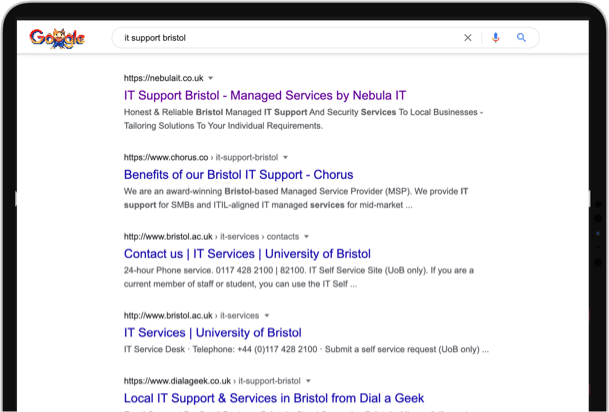
Many of us are very familiar with search engine optimisation (SEO) at this point, but here’s our elevator pitch (skip to the next section if you’ve heard this all before):
SEO is the process of optimising your website to improve your ranking on search engine results pages (SERPs) like Google, Bing, etc., and is achieved by creating insightful content using relevant keywords and making key website improvements.
Search engines use bots to crawl through pages, making logical links between them and forming an understanding of how your website works.
This means that SEO needs to be written with two audiences in mind: your target audience who will buy your product/service, and the AI algorithm that governs how you rank on SERPs.
Why is SEO important?
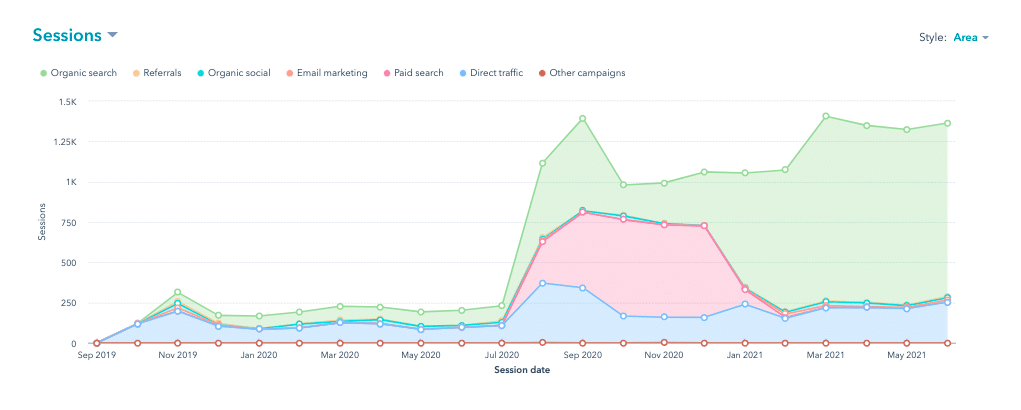
You’ve spent good money on your website, and that money is wasted if nobody’s looking at it, so getting it right is important.
Historically, web content was written with one thing in mind: keywords.
While keywords are still necessary, search engines have shown time and time again that well written, insightful content is king. At the end of the day, they want only the best content to be shown on their search engines. The better content they show, the more likely users will continue to use them. Makes sense!
Here’s four key benefits to implementing good SEO:
Organic search is key
Organic traffic is any visitor to your website that clicks through after searching for a keyword that you’re actively ranking for.
If someone searches the internet for a solution to a problem that they’re having, and they find your website which offers said solution, then it stands to reason that they’re far more likely to buy what you’re offering.
In fact, studies show that SEO leads have a 14.6% conversion rate, which dwarfs the 1.7% conversion rate of other outbound marketing (like email, for example).
Now, we’re not saying that other marketing efforts are futile, everything’s got its place, we’re just stressing just how bloody important SEO is to success in modern business!
Improve your bottom line
More leads, more money. Need we say more?
Many businesses have been reluctant to invest in SEO due to a ‘we’ve been doing fine without it’ mentality, but that just doesn’t cut it anymore.
The money that you invest in SEO can (and usually will) return multiple times what you invested. Not only this, but the benefits of SEO are literally quantifiable, so you can easily see exactly how your efforts are benefitting your bottom line with breakdowns of leads, conversions and more.
It might take a little time to see these benefits, but you’ll be glad down the line!
Build trust with your target audience
Sitting at the top of a SERP carries a lot of clout. It’s a passive recommendation that your website is the best, and if your website is the best, then your business is the best by extension.
A stylish website with an efficient user experience will help to establish your brand as a true digital player in your industry.
Authoritative content and webpages (content that SERPs deem useful) will help to cement the idea that you’re the go-to organisation for good information, while a good user experience will keep people coming back, while keeping search engines happy.
Cost-efficient
Compared to other marketing, SEO is dead cheap. Obviously, it costs a fair bit to get started, we’d never suggest otherwise, but the ROI that businesses enjoy can’t be understated.
Consider SEO to be a business investment rather than a marketing expense. SEO is, in our opinion, just as important as R&D. You could have the best product in the world, but if nobody hears about it, then what have you achieved?
SEO is the most cost-efficient way to build your brand up to the heights that it deserves.
Quick SEO you can do today
Now we’ve talked about a little of the why, let’s talk about how to actually get it done.
We’ll start with some quick bits of SEO that you can do to see small improvements in the short term. Bear in mind, there are no truly quick fixes; anyone who promises you that you’ll see immediate SEO wins is most likely telling porkies.
What you can do, however, is lay the groundwork for future SEO success in a relatively short amount of time.
1. Keyword research
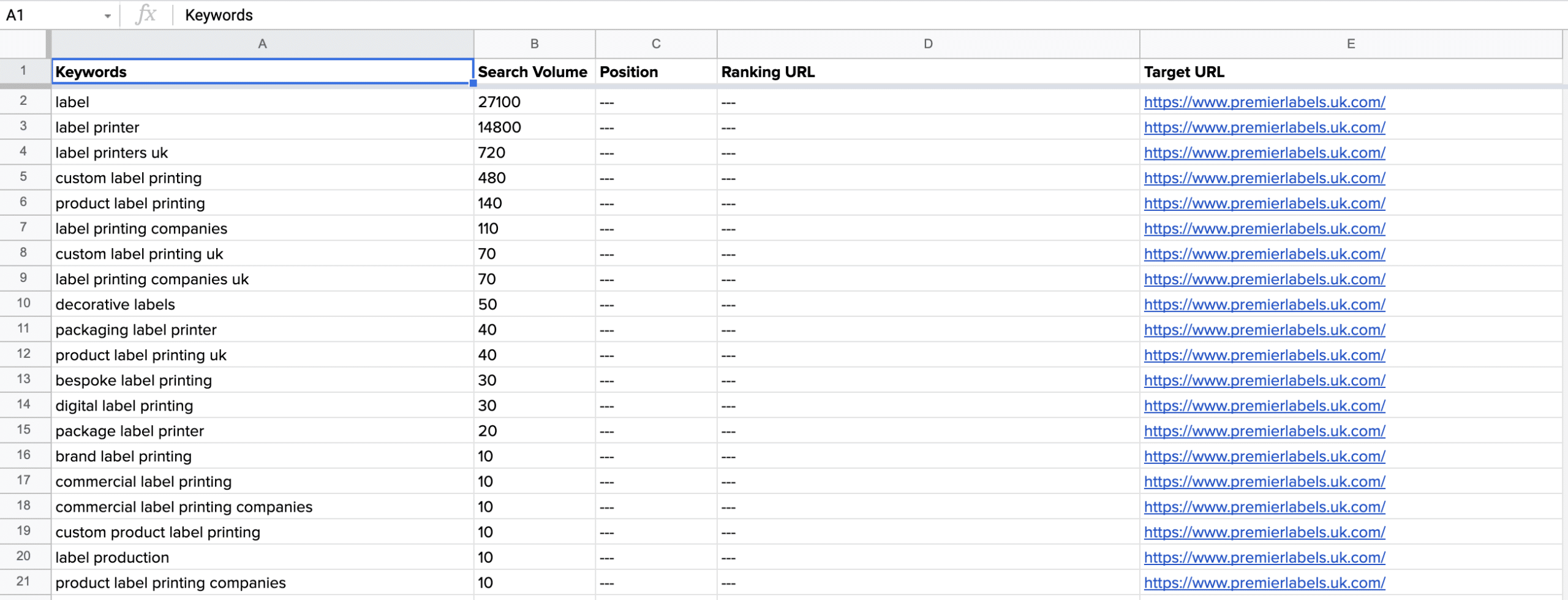
Keywords are like nectar – they nourish your SEO and are at the centre of everything that you’ll do moving forwards, so getting them established early on is critical.
The power of keywords is in their intrinsic connection to your audience. By understanding what your target audience are searching for, you can tailor your content and language to suit. Take the time to:
- Track search volumes – this will reveal whether a keyword is actually being searched for.
- Review competitor rankings – check what your competitors are ranking for and make sure to get a piece of the pie. By incorporating keywords into content that’s better than theirs, you’ll naturally divert traffic to your website.
- Long-tail keywords – the name ‘keywords’ is a little misleading as it suggests individual words, but key phrases can be incredibly powerful! While ‘pizza’ might be an important keyword for your local pizza place, the long-tail keyword, ‘best Hawaiian pizza in Birmingham’ is going to attract the right people (people really hungry for a very specific type of pizza, in this case!).
2. ‘Quick wins’ SEO strategy
Once you’ve established a few keywords (both individual words and long tail), it’s time to make a few changes to your website’s copy to incorporate them.
Identify which landing pages are essential and start from there. Are you mentioning your keywords already?
Remember: don’t oversaturate your copy with keywords. Modern search engines are savvy to this, so this age-old technique doesn’t benefit your SEO like it used to.
Incorporate your keywords in sections that make sense, and ensure that your content still reads well and isn’t noticeably keyword stuffed.
Expand your pillar and offering pages, both to include your keywords, but also to ensure that their calls to action (CTAs) are on-point and converting.
3. Audit your H tag structure
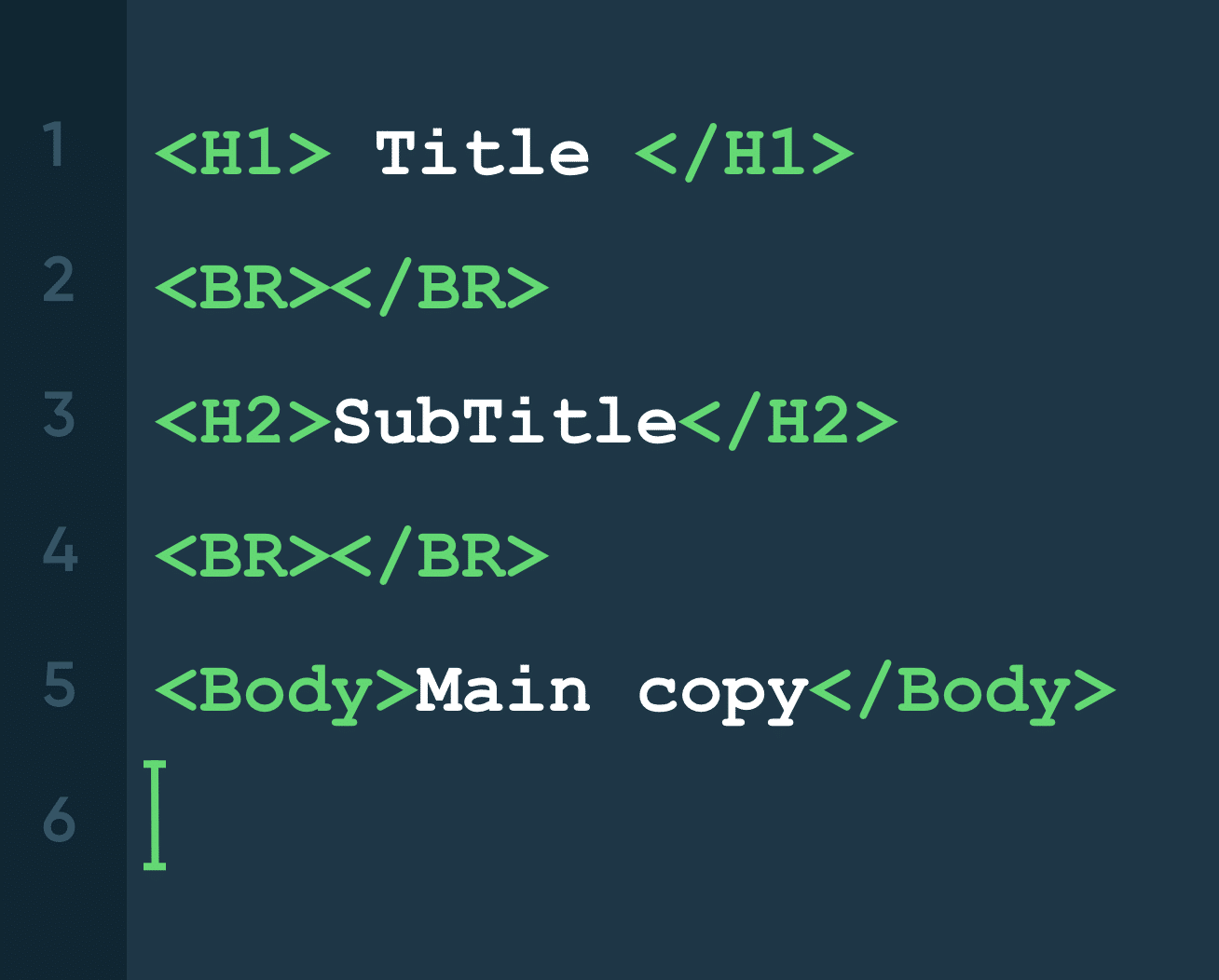
If your heading tags (H tags) are inconsistent, or non-existent, then your SERP rankings will suffer.
Heading tags are there to differentiate your main headings <h1> from your sub-headings <h2> and so on (<h3> to <h6>). This is done to make your website easily crawlable, providing a logical pathway to help search engine bots to understand your webpage.
Not only this, but accurate H tags will make your website more accessible to users. For example, they help screen readers to accurately convey what’s on the page, meaning that visually impaired users can enjoy your website, too.
It doesn’t take too long to make sure that your H tags are up to standard, and it can make a big difference to your SEO performance.
4. Write unique meta descriptions for your webpages
A meta description is an HTML element that summarises your page. Although Meta Descriptions don’t effect the search engine performance of your website they do have a significant impact on the click through rates of your pages from search engine results (SERP). Well written, compelling Descriptions can significantly increase click through rates.
Where no Meta Descriptions exist Google will pull the first relevant piece of content from the page to act as a description – which means you lose control of the content displayed within that description.
Many websites neglect meta descriptions, which can prove detrimental to SERP CTR, so taking the time to write up unique meta descriptions for each page will pay dividends in the long run.
Worth noting: you should avoid repeating your meta descriptions. Search engines don’t appreciate repetition, and will penalise you if it notices that you’re using the same data for different pages.
Long-term SEO strategies

Most SEO strategies can’t be implemented overnight, so once you’ve got your smaller wins in place, it’s time to work on some long-term strategies.
1. Link to internal pages
Link building is another staple of SEO. Backlinks are incredibly important to establish your domain’s authority, as it lets search engines know that your content is valuable enough for other websites to link to it.
Lots of backlinks implies that your content is valuable, but it can take a while to build them up.
The first step is to ensure that your own pages link off to other relevant pages in your website. For example, a blog linking to your contact page and the subject page that it’s talking about.
This helps search engines understand how your website connects together. As you add new pages, make sure that they’re internally linked from the get-go to help them rank.
Following this, the next step is to encourage external backlinks. An external backlink is, essentially, another organisation providing a stamp of approval on your content. You’re looking for high-quality backlinks from high-authority pages – these carry the most weight.
These can be gained naturally as people find your high-quality content and decide to reference it on their own, or can be manufactured through link-building activities.
You might offer to guest blog on another website, or you might reach out and request a link from another organisation; both can be great ways to build relationships and establish strong backlinks.
2. Review bounce rates
Your bounce rate is the percentage of visitors to your website who leave after visiting a single page. If they interact with your website further (clicking on at least one more page), then they’re no longer considered a bounce.
A high bounce rate could imply that your content’s a bit naff, your landing page isn’t providing the necessary information, or your ads are targeting the wrong people.
Despite this, having people bounce from your website is perfectly normal, and you shouldn’t be too worried if your bounce rate seems high.
Depending on your industry and the type of web page, bounce rates can vary from between 26-70%. Having a bounce rate of 70% or higher on a blog isn’t unusual, as people visit, get the information that they need and click off from your website.
Contrary to this, the bounce rate on an eCommerce page should be much lower as people click through multiple products before leaving (and therefore don’t count as a bounce).
This means that you’ve got quite the tricky question to answer: why are people leaving?
Generally speaking, if they’re leaving, it’s because the page’s content hasn’t met their expectations. This could be for a whole host of reasons, but some of the most common are:
- You’re using the wrong keywords, which attracts the wrong visitors.
- Your ads (PPC, social, etc.) might have overpromised, and your landing page has disappointed.
- The web copy is unclear – if a visitor doesn’t understand what you do immediately, they’ll head somewhere else.
- A poor user experience can frustrate visitors, causing them to bounce.
- Slow loading pages can also frustrate visitors.
- If your CTAs aren’t visible or enticing, then they won’t be clicked.
- Boring content – if your copy isn’t well written, say goodbye to your visitor.
Your bounce rate is one of the most important metrics that will inform how your website develops over time. Keep an eye on it while you tinker with your site’s content.
3. Choosing the right plugins
There’s a dizzying choice of plugins available – choosing what’s best for you can be a pain in the arse. Before you know it, you’ve got tonnes of plugins (some of which you hardly use) gumming up the machinery and slowing your website down.
That’s why it’s important to be selective with your plugins. They can bring incredibly useful functions to your site, but you can have too much of a good thing.
So no matter whether you’re looking for essential WordPress plugins, or tailored HubSpot add-ons, take the time to consider what’s right for your website’s unique use case.
4. Page speed is crucial

Ever clicked on a web page, waited for 5 seconds and clicked the back button because it hasn’t already loaded? Us too.
Your pages should load in roughly 0.5-2 seconds. Any longer and you’re risking a bounce before they’ve even seen your page. In fact, even a 0.1 second speed increase can boost your conversion rate by 8% – worth doing!
Removing anything that’s slowing down your site will help make small speed improvements here and there. This culminates in a much more enjoyable experience for all. Remember that modern users are accustomed to having what they want instantly.
Slow loading reflects poorly on your brand, as it suggests that you’re outdated, slow and (possibly) untrustworthy. Not only this, but since 2010, Google have considered site speed as one of the key SEO metrics, so getting it right is critical.
To improve your pages’ speed, you’ll want to configure them correctly and remove any unnecessary elements that could be slowing them down:
- Streamline your HTML code – as pages are added, code might be added on top of code, different developers might get involved, and the whole situation can get messy. If you’ve got an older website, your code might need a little spring cleaning.
- Get rid of excessive big imagery – too many uncompressed large images can severely impact your load times.
- Ensure you’re hosting your site on fast, dedicated servers, and make sure that your caching is optimised at all times.
- Many speedy websites use content delivery networks (CDNs) to reduce the distance information has to travel between the server and end user. Less distance, faster loads!
- Tidy up your media library and database – old/unused imagery and data can and will clog up your website.
5. Optimise for mobile
Making sure your website works for mobile is essential.
For years mobile has accounted for roughly 50% of all website traffic, but since early 2021, mobile has accounted for 54.8% of all traffic – a number that’s looking to continue climbing.
This means that mobile has become the dominant form of web traffic over the last few years, so if you’re not optimising for mobile, you’re not targeting the largest market out there.
Not only this, but since July 2019, Google’s mobile-first indexing means that all new websites will be indexed based on the mobile version of their website.
This is a trend that we’re likely to see continue well into the future, meaning that ensuring that your website is mobile friendly is paramount to SEO success.
To find out whether your website is mobile friendly, you can use Google’s free Mobile-Friendly Test.
6. Write for humans, not search engines
This might seem a little counter intuitive. After all, we’re trying to impress the Google search gods, but Google’s algorithm takes into consideration so much more than it used to.
For example, keyword stuffing (over-saturating your copy with keywords) used to be a go-to strategy for improving SERP rankings, but search engines have clamped down on this as it encouraged organisations to pump out sub-par content, and, as we know, they’re all about top quality content now.
As a result, you’ll want to make sure that your content is well formulated, properly written and genuinely informative; your content needs to provide tangible benefits to visitors, rather than serve simply as clickbait
7. Include keywords for imagery
It’s easy to forget about Google Images, but the truth is that many searches happen over on Images, so making sure that your imagery is properly optimised will help your SEO efforts.
Building a ranking website isn’t just about slapping on some good pictures, dusting your hands off and calling it a day.
Images without any metadata can’t be read by search engines, so don’t forget to ensure that your file names are descriptive and keyword rich.
Not only this, but make sure to include SEO-friendly alt text (the text shown if a browser can’t render an image). This provides crawling AI with more context on an image, while also making your website more accessible for individuals who are visually impaired.
Long-term SEO help
There’s a lot of behind-the-scenes stuff that goes into a successful SEO strategy. Unfortunately, if you let your SEO slip for any period of time, you’ll quickly find yourself being replaced on SERPs.
Everyone and their dog are jumping on the SEO bandwagon; it’s one of the most competitive aspects of modern business, so it’s important to remain consistent.
Maintaining a constant flow of content is the best way for you to remain relevant in the SEO world.
Your ‘fresh factor’ is Google’s way of ensuring that their search engine remains up to date. Good content that is new, or content that is updated regularly, will improve your SEO more than infrequent posting or content that’s left to go stale over time.
This is especially important in industries where there’s regular change. If there’s news that’s hot off the press, then writing about it immediately will help to bolster your SEO more than writing about it a week or two down the line.
Develop your SEO strategy with Catalyst
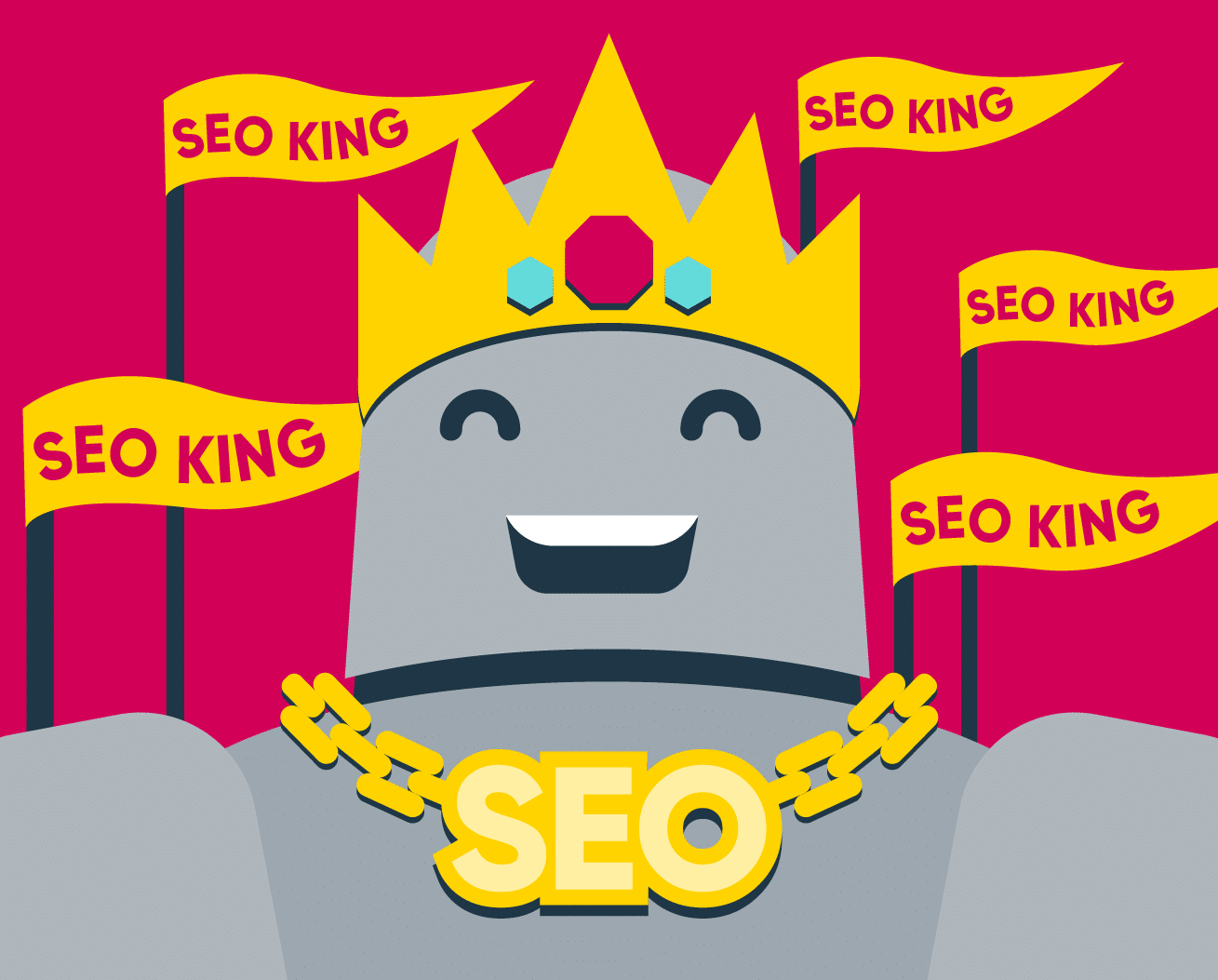
Welcome to the end of this article – you made it! We know there’s a lot to take in here; SEO can be a real minefield, and getting it wrong can prove both expensive and frustrating.
At Catalyst, we believe in no-nonsense digital marketing. We help organisations to develop lead generative digital marketing campaigns.
Our SEO experts are on hand to help advise & improve your SEO processes, no matter what stage you’re at. Get in touch with our team today to find out more about how we can help your organisation to thrive.

